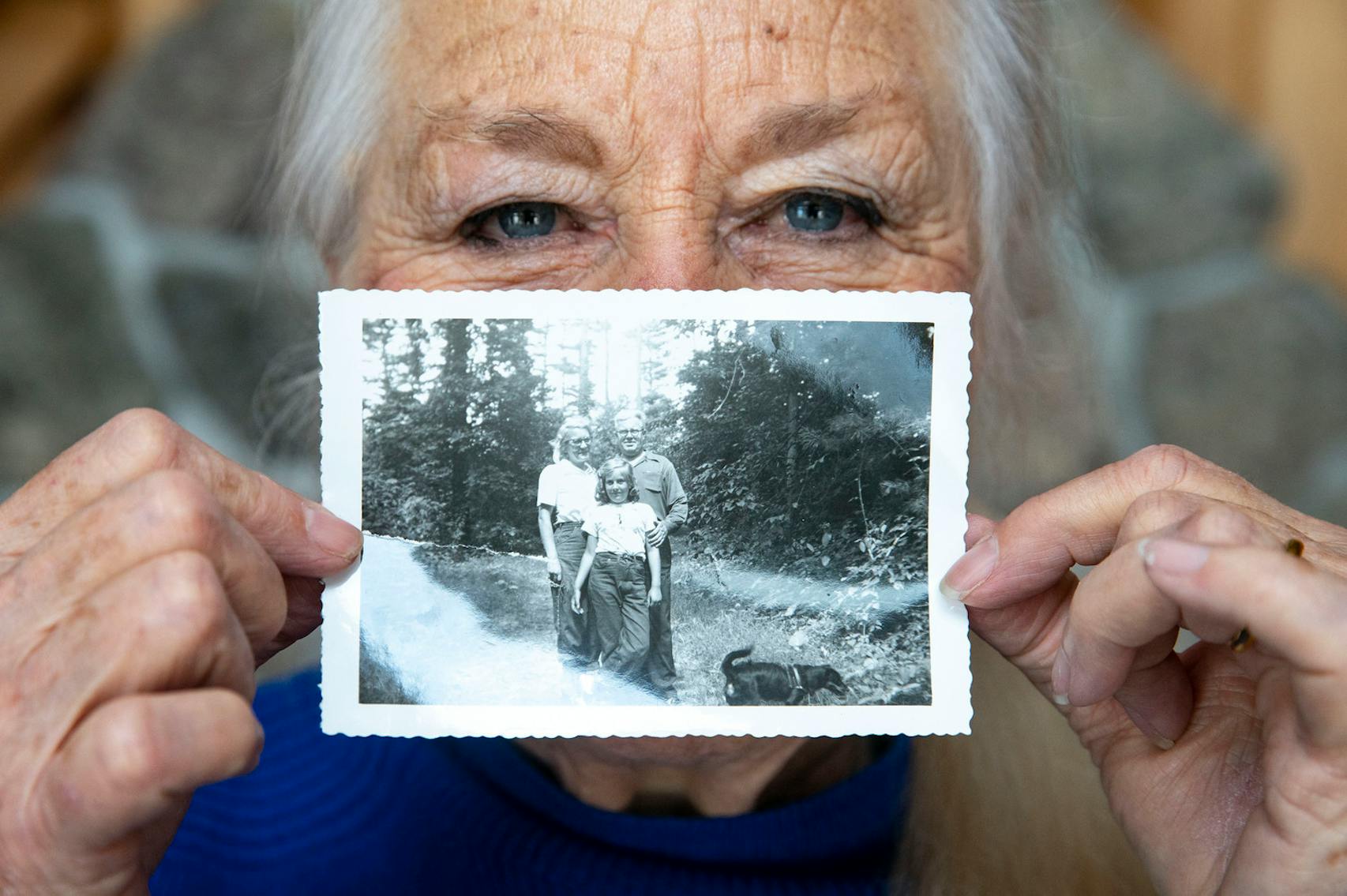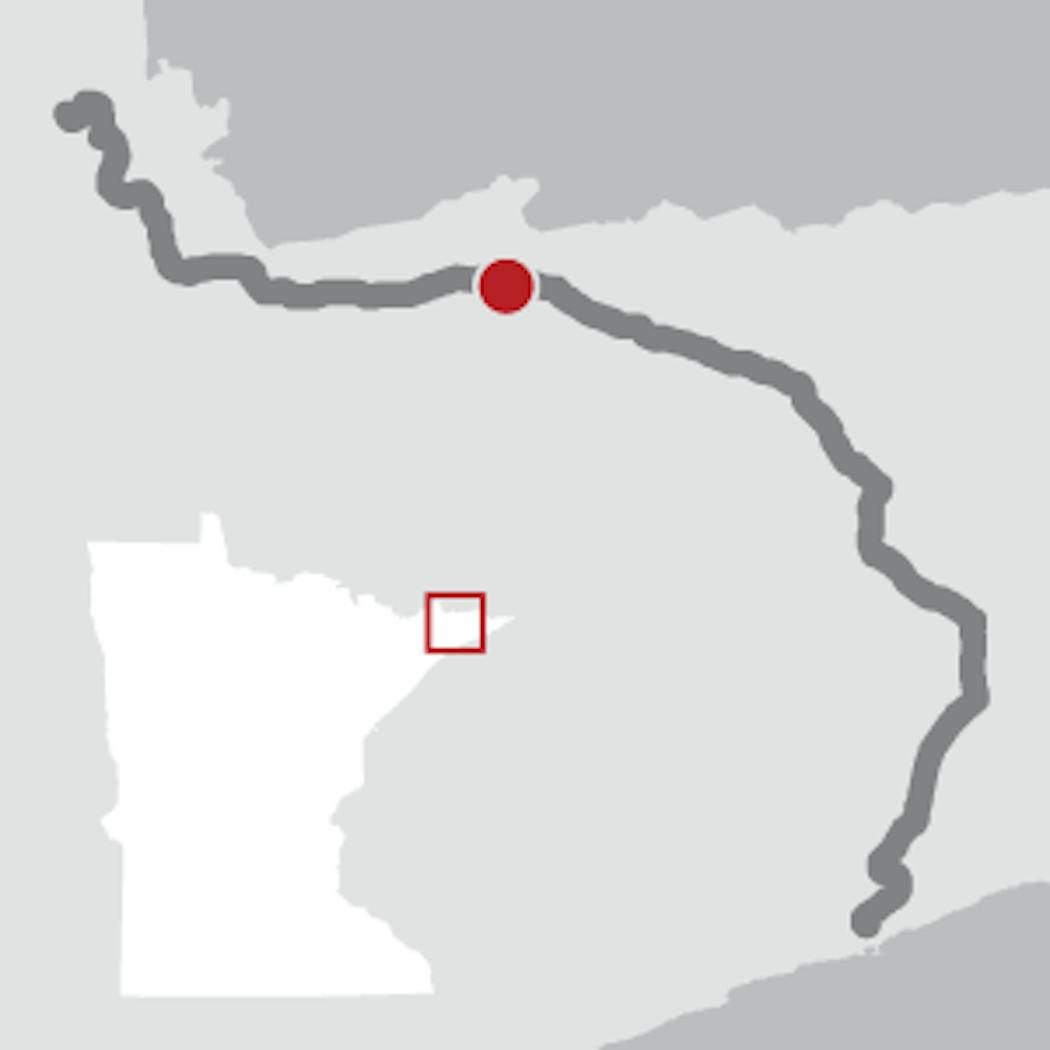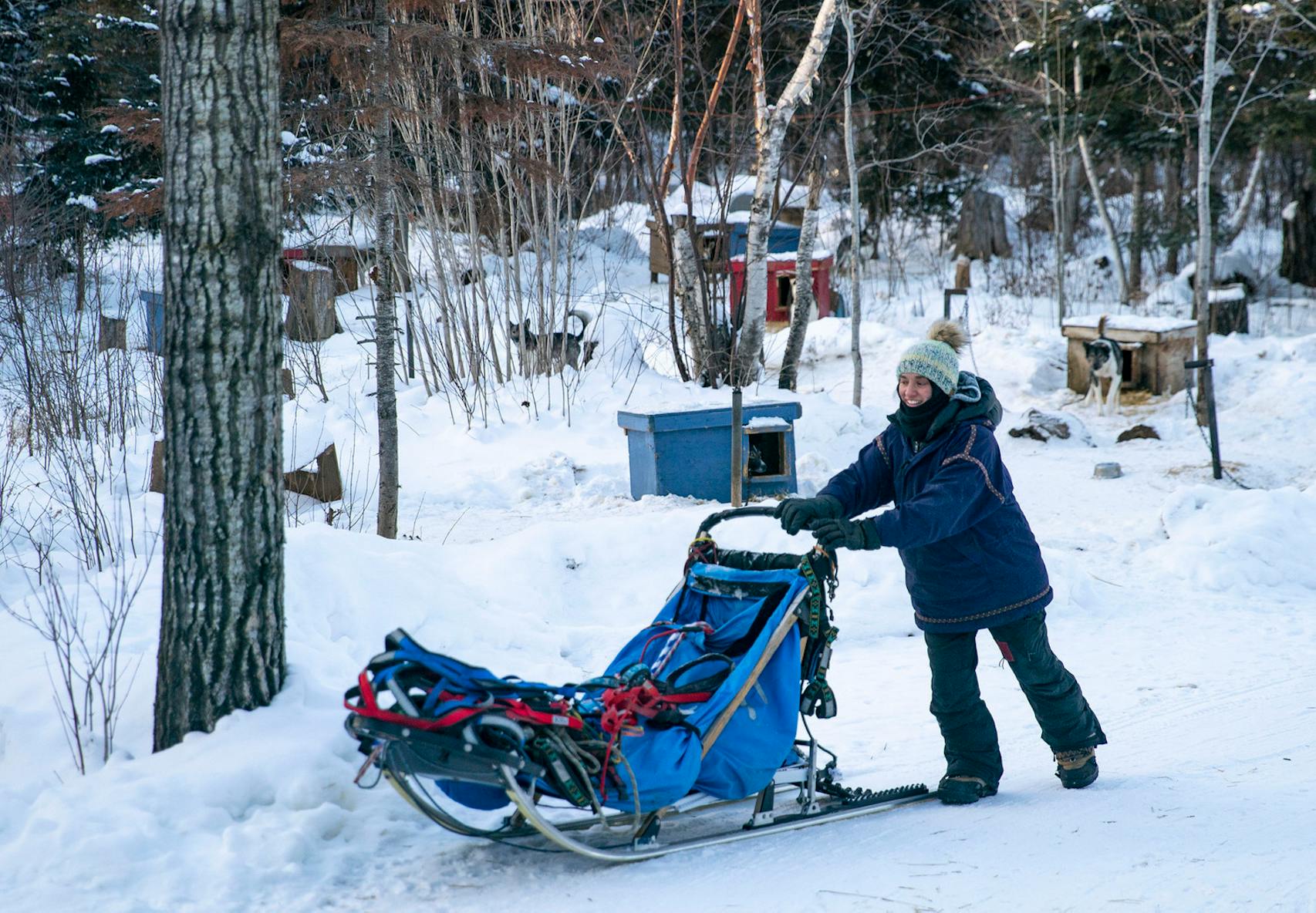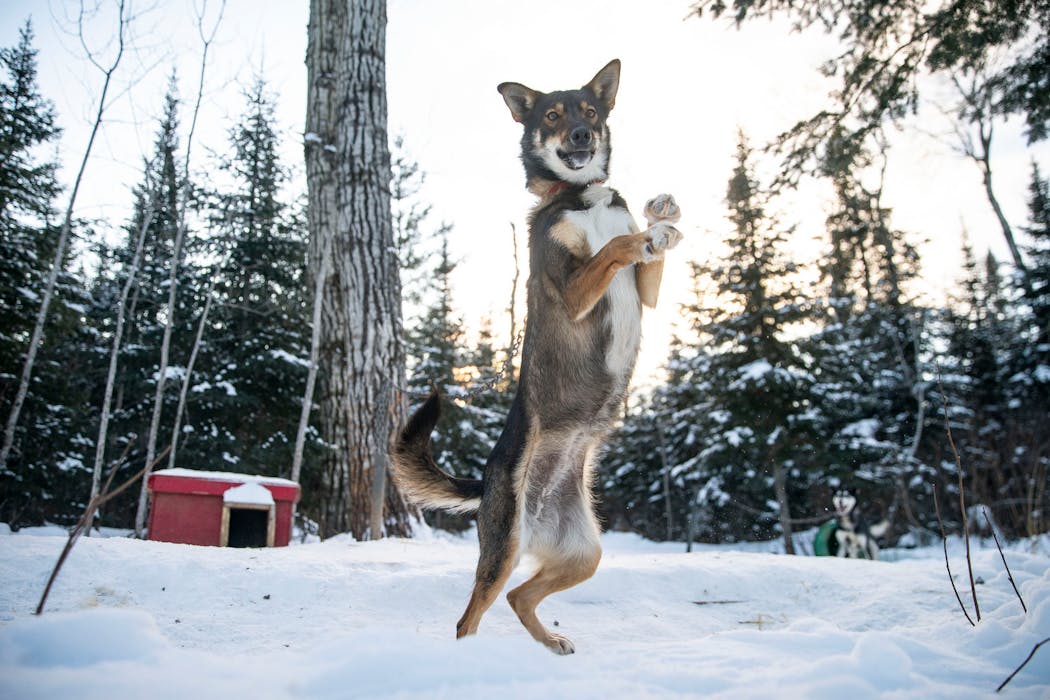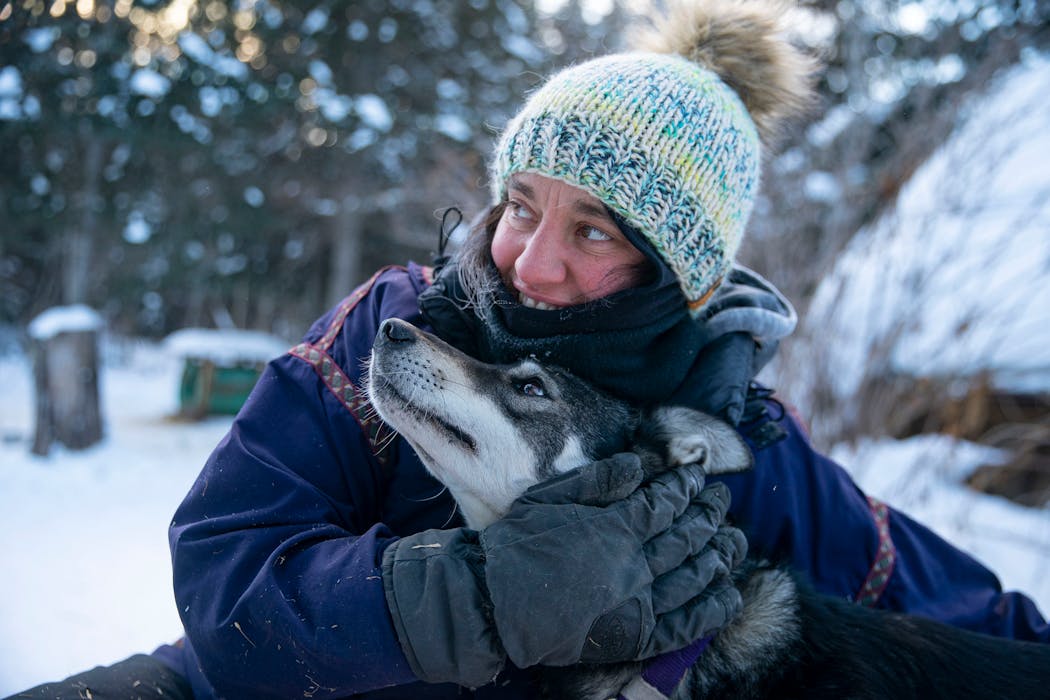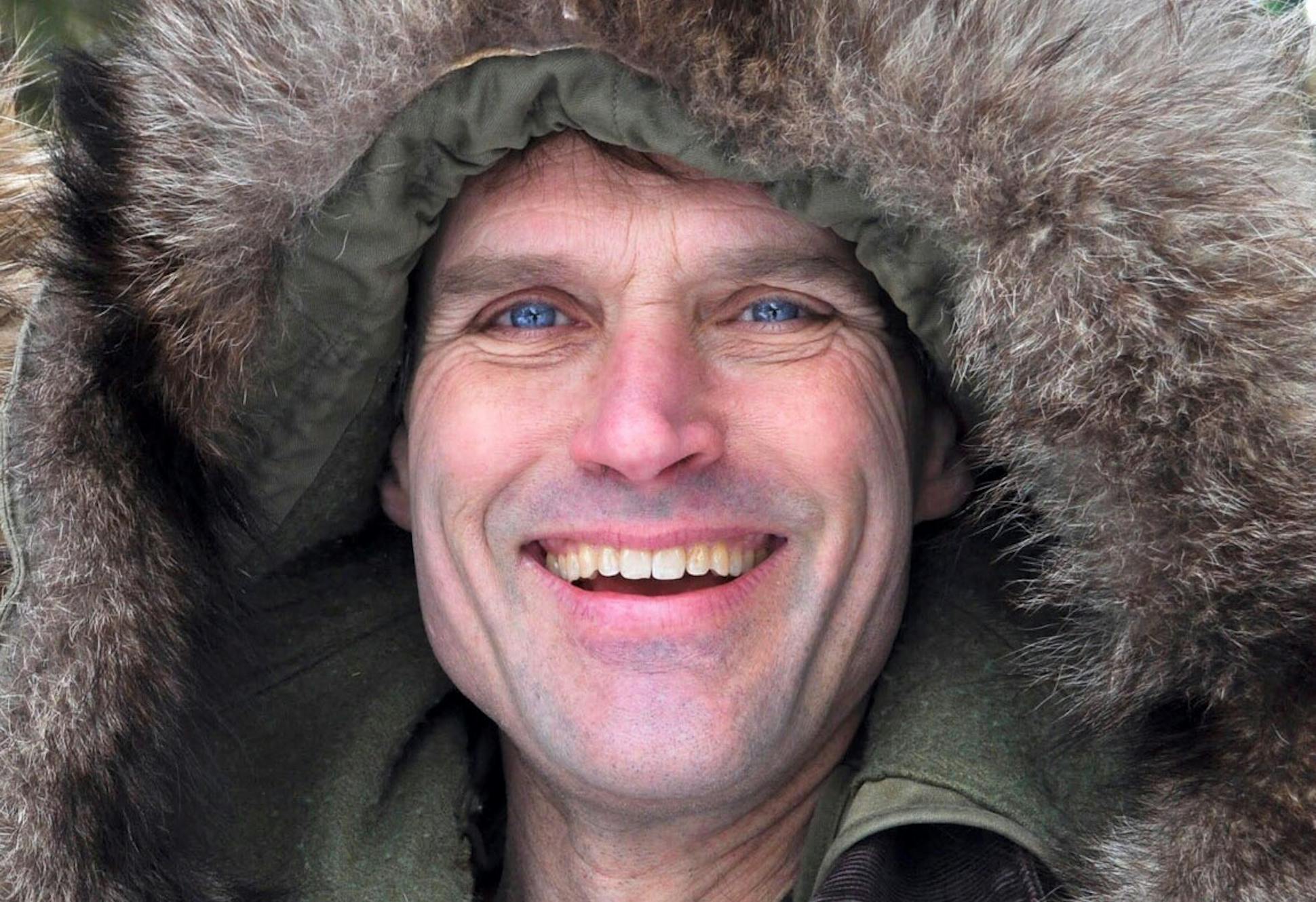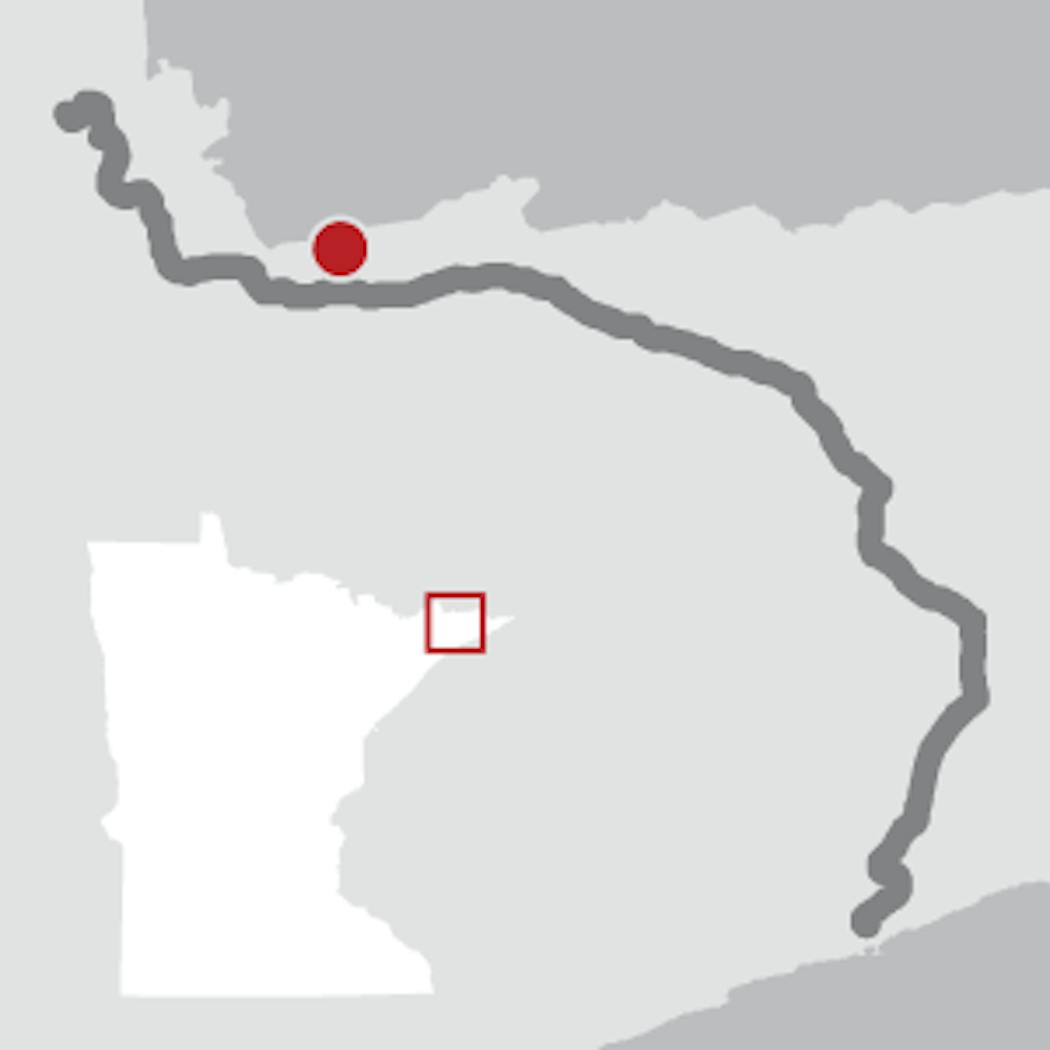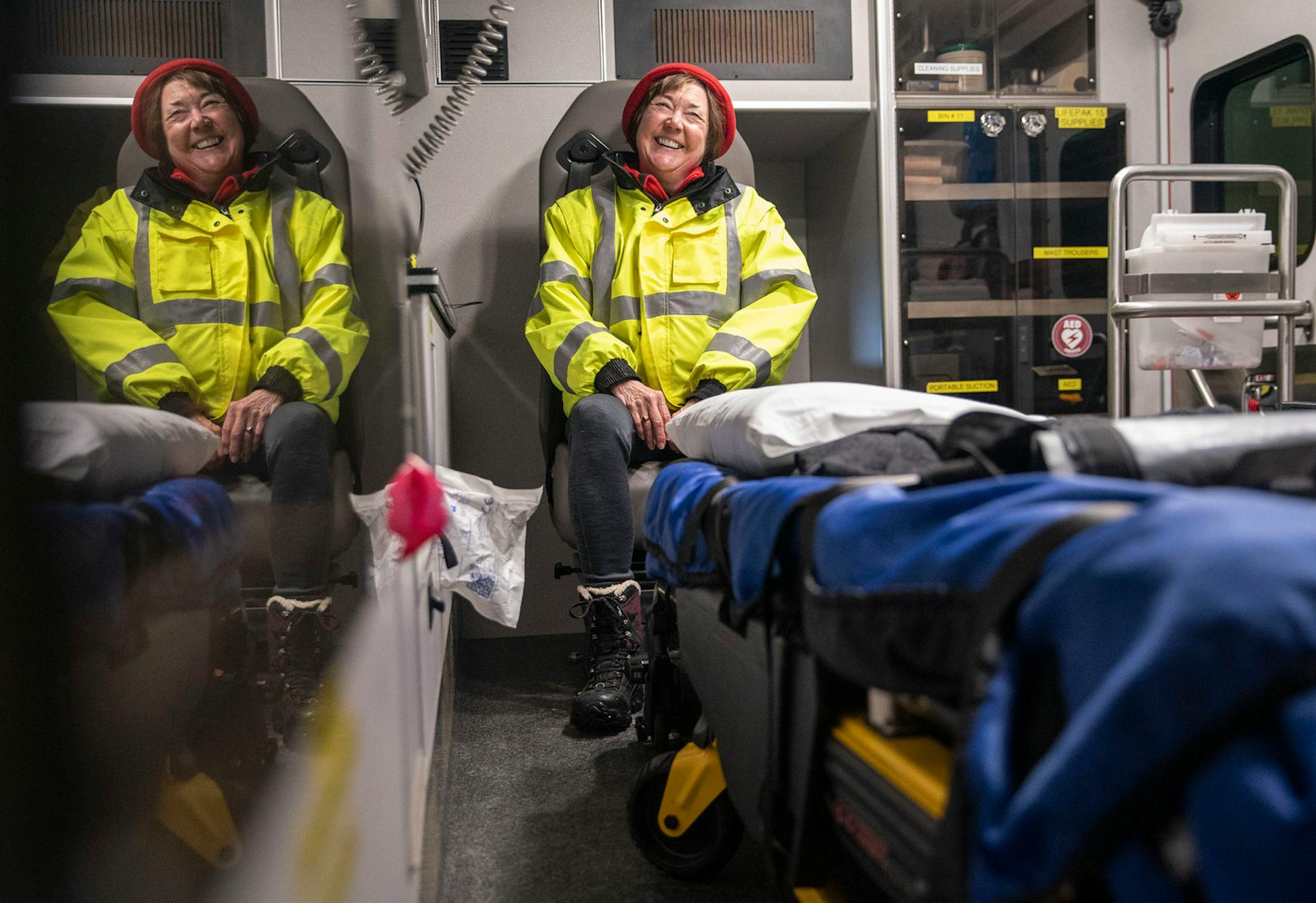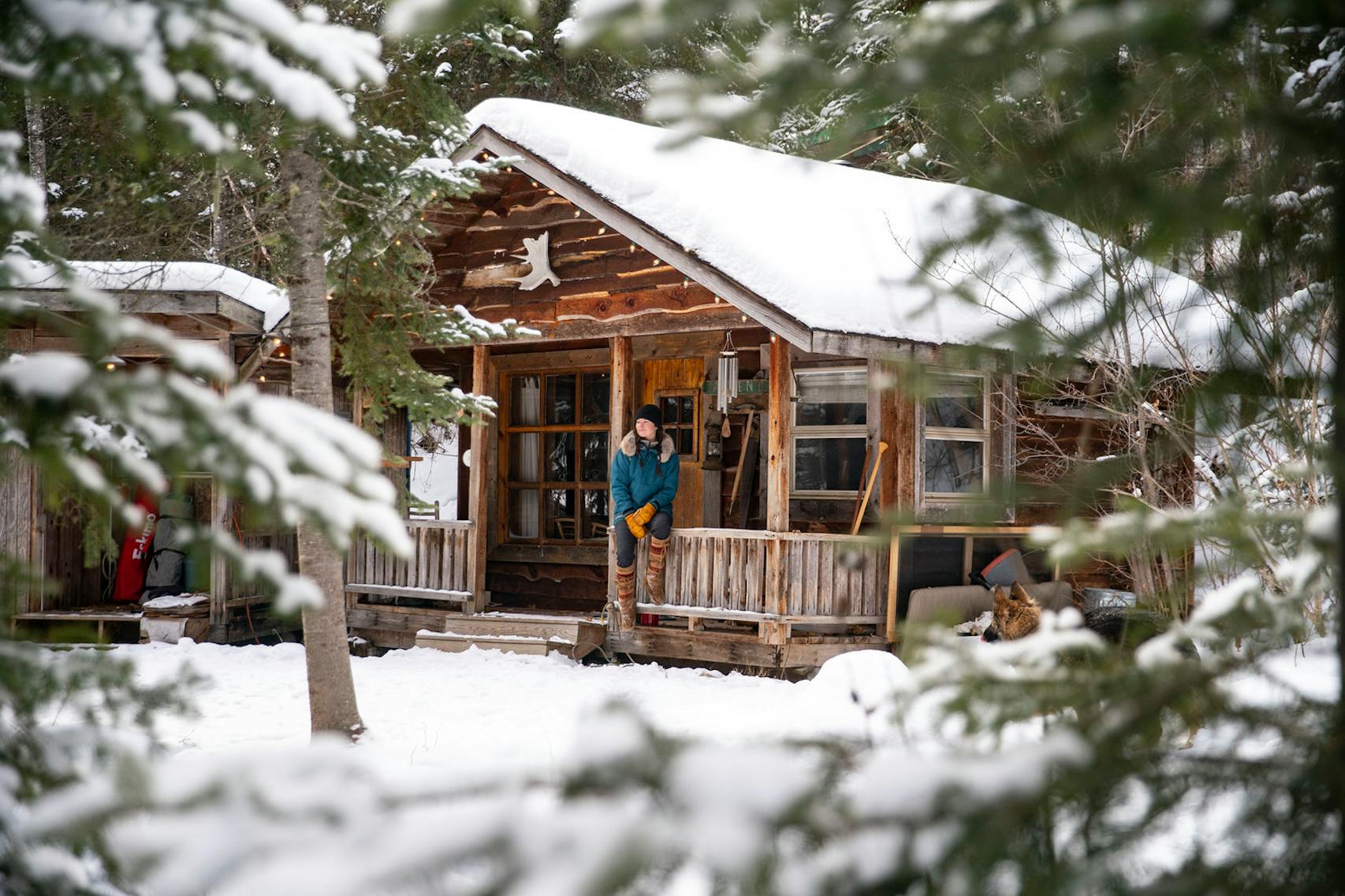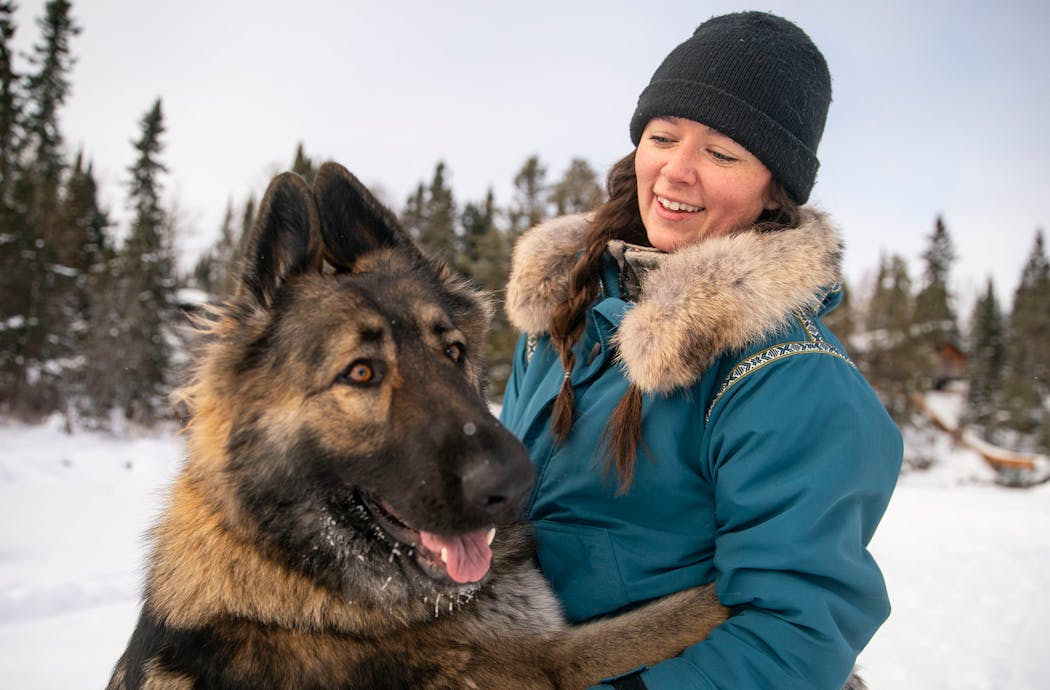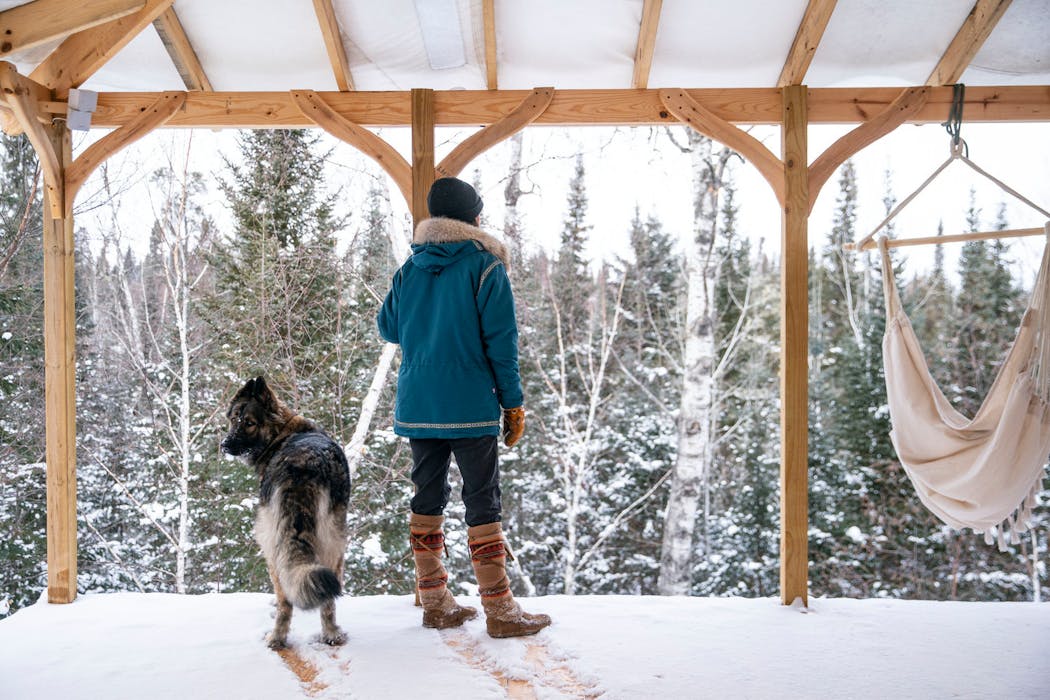Of all that has changed over centuries along the Gunflint Trail, the greeting that pines whisper to old-timers and newcomers alike has been constant. Hundreds of years ago, breezes sifting through the long-needled branches of these statuesque trees sang like music to the Ojibwe and Cree as they picked their way along what was then only a footpath.
Also entranced by the pines' siren song was the trail's storied matriarch, Justine Kerfoot, when she and her family trekked to "the Gunflint" from Chicago after losing their fortune during the Depression.
In March it was Dave Kregness' time.
A Boy Scout who as a kid paddled Boundary Waters Canoe Area Wilderness (BWCA) lakes adjacent to the Gunflint Trail, Kregness, 63, always was enamored of the region's cold, clear waters and the quiet travel they afforded canoeists.
But until the pandemic coiled itself around his day planner, he never thought he would live in Minnesota's far north.
"My wife and I have a home in Plymouth, but I work for a California company and until March of last year I was on a plane every week," Kregness said. "When the coronavirus hit, I kept working but I stopped traveling. When my wife, Barbara, got laid off from her job, it gave us time to think. With my age and health, I'm at risk for the virus. So we decided to make a change and look for property along the Gunflint."
They weren't alone.
Throughout Minnesota's Cook County last year, home to the 57-mile-long Gunflint Trail, prospecting for vacant land, seasonal cabins or, as in the Kregnesses' case, year-round homes, seemed akin, at times, to a modern-day Gold Rush.
Some who came north were dreamers who imagined new, more adventurous lives in a land where wood smoke curls from winter cabins, dog teams carry anglers to distant trout lakes and wolves howl in the middle distance.
But others hoped the region's remoteness and scant population would insulate them from the ravages of a virus whose victims at times seemed chosen by roulette.
"Typically, 60 to 70 percent of people who buy property in Cook County are from the Twin Cities or the Upper Midwest," said local real estate agent Mike Raymond. "But last year we had people from the East and West coasts inquire about property, and some came to take a look. We've sold property that has been on the market eight or 10 years. Our biggest problem is a lack of inventory."
The region's major drawing card is its North Woods aesthetic. Bald eagles aloft over blue-water lakes flush with walleyes and smallmouth bass are real estate slam dunks that property seekers often can't resist.
So, too, black bears gorging on wild blueberries, moose wandering through backyards and loons bidding "Good morning" to all within earshot.
Grand Marais' postcard-like perch hard by the shores of Lake Superior, its smorgasbord of eateries and shops, and its emerging artsy vibe are among other attractions.
But the dealmaker for many who have recently trekked to the area questing for property or simply vacationing is the availability of high-speed internet. Snaking invisibly beneath and among Cook County's pre-Cambrian bedrock is a byzantine labyrinth of fiber-optic cable that has transformed most of its 2.1 million acres into a modern-day "Zoom town" — not unlike the nation's boom towns of yesteryear.
Except that boom towns were built on the perceived presence of gold or other riches, whereas Zoom towns trade in a different kind of treasure: The chance for residents to live in remote and oftentimes beautiful nature-rich locations while earning paychecks from distant and oftentimes less beautiful and less nature-rich urban-based employers.
With a click of a mouse, Zoom-towners also can kibitz with their far-flung kids, watch movies on Netflix and order two-day delivery from Amazon.
"We needed good phone and internet so I could keep working," Kregness said. "We found both in a year-round home on a lake 37 miles up the trail from Grand Marais."
The local electric co-op, aided by community activists, is credited with leveraging a federal grant a dozen years ago to connect Cook County homes, cabins and businesses for free with high-speed internet, provided they were on the electric grid.
"With all the rock we have up here it wasn't easy, but we built out the entire system in five years," said John Twiest, chief executive and general manager of Arrowhead Electric Cooperative. "People want to work from their homes or cabins, and resorts up the Gunflint were competing for customers and using up their satellite data in a hurry. If you don't have broadband, you're at a technological disadvantage."
Sarah Hamilton owns Trail Center Lodge, a resort, restaurant, bar and motel on Poplar Lake 29 miles up the Gunflint from Grand Marais.
Like other Cook County tourist operators, including those in Grand Marais, Hamilton was busy last summer nearly to the point of exhaustion.
"The first couple months [of the pandemic] were nothing," she said, "because everyone was trying to get away from everyone else. Then lodging went crazy with lots of new people who had never been to the area before. People came from the Twin Cities, but they also came from other states."
Twenty-eight years ago, Hamilton said, when she moved to the Gunflint from Des Moines, things were different. In winter, snowplows came by less often, and if you went in the ditch en route to Grand Marais for supplies, you might be there awhile before another vehicle came by.
"There were only a handful of us who lived on the trail year-round," she said. "In a way, we were all loners who didn't want neighbors. I got used to dark skies and absolute quiet. Don't get me wrong. The Gunflint is still beautiful. But cabin owners come up here now in winter, and with the internet available to everyone, you can work from here. Technology changes everything."
Yet, as Justine Kerfoot once wrote of her 70-odd years on the Gunflint: "My lifelong residency occupies but a fleeting moment in the millennia of the region's time."
Before and after her, Kerfoot was acknowledging, were the Gunflint's constants: its land, waters, wildlife and whispering pines — the same natural phenomena whose rhythms and cadences centuries ago bewitched, amused, entertained, challenged and, in the end, seduced Native Americans, and after them, trappers, miners, resort owners, loggers ... and, now, distance workers.
Each learned the lesson of those who had come into this country before them: that land ultimately transforms people, not the other way around.
"My wife and I are the only ones living in winter on our lake," Kregness said. "It's peaceful and serene. We snowshoe, and I'm learning to ice fish. I've never been an ice fisherman, but we have bluegills and northern pike in our lake, and I'm learning.
"I'm also learning how to deal with septic systems in winter, how to draw water from the lake to our home and how to heat with wood. Just before sunset we'll take a walk, and once we saw a wolf crossing our lake and meeting up with another wolf standing on a beaver house.
"Really, that's what we're doing, learning, because you have to learn how to be a part of this country, not just live here."
THE GUNFLINT THROUGH TIME
• The Gunflint Trail, or Cook County Hwy. 12, is 57 miles long and connects the village of Grand Marais with the Sea Gull River and Saganaga Lake, which straddles the U.S.-Canadian border.
• Formed as early as 1800, the original trail was a zigzagging path among cliffs that Ojibwe and Cree Indians used in winter from Gunflint Lake to Gichi Bitobig, now known as Grand Marais.
• Gunflint Trail improvements began in the 1890s to support a mine southwest of Gunflint Lake. Winter plowing began in the 1930s, but occurred at first only twice a year, at Christmas and in spring. Other winter trips were made by dogsled.
• The Civilian Conservation Corps constructed the final 20 miles of the trail in the late 1930s.
• By 1953, the first 35 miles of the trail had been paved and its entire length was blacktopped by 1979.
PEOPLE OF THE TRAIL
'My heart is in the woods'
Joyce Leddy shares a memory
Like photo albums and frames on built-in shelves of her cabin on Birch Lake flush with family, Joyce Leddy overflows with memories. Before the boundary waters were designated a wilderness. Before cabins existed on Birch Lake. When the Gunflint Trail was more trail than road. The environment was untamed and otherworldly for a little girl from Chicago.
"It was magical [and] terrifying all at the same time," said Leddy, whose love of place was sealed during visits with her parents, beginning in the 1940s.
She and her husband, Tom, both 80, have never ventured far in all the years since. Now, they have been living at their cabin since March, a refuge from the coronavirus and their residence in Chicago. Built in 1976 and worked on ever since, their cabin and its décor is an homage to the people in their lives and the places they've been.
"It's been an anchor," Tom said.
Joyce said an uncle, Floyd Soderberg, built the first cabin on Birch Lake, just next door, in 1948, atop a government lot he'd bought with his brother Carl. They had part of another lot on Poplar Lake, which would house their Soderberg Cabins. The brothers, she said, came to the trail years earlier from Sandstone, Minn., during the Depression. They were "men of the north," she recalled, who'd found a trapper's cabin not far from Grand Marais and hunted and fished year-round.
Her parents, George and Eva Cleaver, camped in the region in the 1930s. After she was born, Joyce and her parents visited from Chicago in weekslong blocks at times, traveling two-lane roads all night and breaking oil pans when they hit the rocky trail. They'd often have to park and backpack down to their family's site at Uncle Floyd's cabin spot on Birch. They'd camp, and her parents loved to fish — as her photos of full stringers attest. She recalled the other cabins she saw popping up, true "fisherman's cabins" with few windows and no plumbing. Her parents later owned and ran Trail Center for a few years in the early '60s.
Life transported the Leddys around the world. They lived in Pasadena, Calif., for 25 years before returning to Chicago to be near their son, Tom. Through those years they made sure to spend every Christmas at their cabin, in addition to the summer visits.
Striking in its long, narrow shape and encased in boreal beauty, Birch Lake, too, has given over to time. There are 35 to 40 cabins on the lake now, each one a heartbreaker to Joyce, who's wistful about the days of bountiful wildlife and few people.
Regardless, they've been swept up by their time Up North, their bubble on Birch.
"My heart is in the woods," Joyce said. The two still snowmobile and snowshoe.
They've deeded their place to their two granddaughters, guarding five generations flowing with Nordic blood on the Gunflint.
"We want them to have the opportunity, and not lose our history up here," Joyce said.
bob timmons
Lives united by dogs, trails and snow
Mushers Erin Altemus and Matt Schmidt have a lot of mouths to feed and miles to track from their remote spot up-country. But theirs are lives in sync with the season like others in the dogsledding community, some of whom still remember when dog teams were a means of travel and work.
The couple and their young daughter, Sylvia, 3, live with 30 Alaskan huskies 3 miles deep in forest, well off the Gunflint Trail and northeast of Devil Track Lake. Reaching their cabin and kennel isn't a lock, depending on snowfall. Still, the location is a gateway for the family, which operates its Mush Lake Racing kennel, and has been raising and racing dogs Up North for about seven years.
Few days are "typical," said Altemus, 42, who also is a nurse at North Shore Health and Care Center, the hospital in Grand Marais.
In early January, Altemus was waiting to see how her body responded to her second COVID-19 vaccination. Her mind also was on a possible 50-mile-plus training run with her handler and training partner Anna Hennessy and two teams of dogs later in the day if all went well. The Beargrease was approaching, but dogsledding has seen its stride impeded by weather and a pandemic. Too, Schmidt is recuperating from health challenges that have kept him off a sled.
"This year has been so odd," said Altemus. They ran their dogs behind ATVs until a week before Christmas because of the dearth of snow, and COVID-19 continues to cancel races everywhere. The Gunflint Mail Run, a forerunner to the Beargrease where Schmidt's twice placed second, was a no-go last month, and the couple's plans for Race to the Sky in Montana this month are dead. The Canadian border closure hasn't helped either.
Schmidt and Altemus started dating in 2003, having met at the YMCA's Camp Menogyn on West Bearskin Lake, where they both guided young campers.
Their Gunflint story isn't all that original in that regard. "People always joked that if you didn't find your partner at Menogyn, you were pretty much out of luck," Altemus said, with a laugh.
On a bracing afternoon last month, long shadows slanted across their property in the dying day. They and their charges were recovering from a 100-plus mile training run well into a morning of little sleep. Altemus and Hennessy had each led a team, picking up a snowmobile trail nearby that connects with other snowmobile trails and, in time, forest roads, as they racked up the wilderness miles.
Around that, there are dogs to keep well-fed, new straw bedding to put down, and poop to pick up from the multiple dog houses that make up a little enclave.
"I don't know what is typical," said Altemus, when asked about their routine, "because our work life is kind of crazy. It's tough to maintain a super-consistent schedule."
Still, for all their physical isolation, they look forward to events, like the dogsled races that culturally and historically connect so many people on the Gunflint Trail. Schmidt, who turns 42 on Saturday, said his health challenges have helped widen their circle. He is a volunteer at the Gunflint Volunteer Fire Department, and he said many in the community have offered support and help in recent months.
"I think the irony of the Gunflint is that a lot of the people who live up here, I don't know if they value isolation but people are kind of isolated," Altemus said. "But then there are these events that bring everyone together. For us, I'd say the dog races are the big part of connecting."
They've noticed that there are more people at cabins during the pandemic — more people on the trail than normal during these stark winter months — some of whom probably are working remotely. And, as long time seasonal workers years ago, they anticipate summer and fall will reel in thousands more. They're OK with that. They know it's a necessity in their far-off part of Minnesota, and the impact has been a small region with considerable opportunities, from the arts to recreation.
"I think most of the Gunflint Trail currently needs tourism to survive. It's not like 100 years ago when logging was a big driver for the economy. Most of the people who live up here year-round rely on the tourism, and people know that," Altemus said.
As for the Beargrease, Altemus and her team went on to lead a few legs close to home, and finished a strong fourth Feb. 2 — a satisfying result. (Coincidentally, Schmidt finished fourth in 2017.)
"I had a lot of Cook County cheering for us," Altemus said.
bob timmons
Oasis amid signs of change
When Greg Gecas grew up on Gunflint Lake, electrical service was shaky and the 47-mile drive to Grand Marais was a three-hour trek that included stops for car sickness.
His grandparents owned and operated Heston's Lodge, a North Woods retreat that's still no bigger than five cabins. Greg and his wife, Barb, bought the place in 1989 from Greg's mom, Sharlene, and raised three children. The kids lacked television but made close, lasting friendships with some of the resort's loyal summer guests.
"We could double in size if we wanted to but it would eliminate the very thing that brings people here," Gecas said of the family business.
The lure is tranquillity. Even on a "busy" summer weekend, there won't be more than a handful of boats within eyesight of his dock. When the lodge opens each winter from Christmas until February, guests wander out to fish, ski or snowshoe. They also hunker down and read, sequestered in cabins hidden by spruce, cedar and white pine.
As time goes by, Gecas admits to some uneasiness about the arrival of high-speed internet and more humans.
Most obvious in 2020 was the increase in year-round residency, he said. As a longtime snowplow driver, Gecas never saw many tire tracks in the driveways of his customers. Now those signs of people appear frequently, even on weekdays.
A diehard picker of wild blueberries, Gecas said he's starting to encounter more competitors in patches he once considered hidden. At the lodge last summer, a prospective customer asked if Jet Skis could be rented. The answer, of course, was "no.'' But Gecas said it was the first time anyone ever asked.
Now 61, Gecas was 11 when his grandfather died. Myrl Heston was a Chicagoan who bought the lodge in 1943. "I bought a paradise,'' he told his cousin, Virl, who was then stationed in the South Pacific. After the war, Virl moved next door. Eventually, he mentored Gecas on how to fix things and work out of jams.
Gecas said the Gunflint has been slowly losing characters like Virl, who died in the mid-1990s. Gone are an age of shack-dwelling trappers, hired hands, and fishing guides whom Gecas admired as gifted woodsmen. "You just don't see them anymore,'' he said.
When locals meet for coffee this winter, they wonder if people who visit the area are losing regard for its pristine beauty. There's been an increase in roadside littering, he said, and a big topic of conversation is the trend of private cabins rented continuously via AirBnb and Vrbo. styles cq
"We're starting to get people up here who aren't as self-reliant as they once were,'' Gecas said.
tony kennedy
Gunflint bond built, grown
Reader's Digest was searching for telecommuters in the U.S. workplace in 1998 when Laura and Daryl Popkes were settling into their new life on the Gunflint Trail.
The magazine featured them working remotely from their cabin on Birch Lake — she as a nursing consultant and he as a subscription management whiz for print publications. They were linked to the outside world by fax machine, phone lines, UPS, FedEx, slow-speed internet and periodic flights from Duluth.
The connections took time to master. They moved from a crowded Bloomington neighborhood to a place where moose roam and wolves howl. But the couple's biggest breakthrough was fitting in with the Gunflint Trail community.
"Laura is very social, and she got involved with church and the local fire department," Daryl said. "She made a lot of friends in a hurry."
The Gunflint Trail Volunteer Fire Department was new when the couple arrived. She joined as an EMT and remains a regular on the crew's calls. One of her nursing specialties is wound care.
"We've had some scary runs," she said.
Even in summer, the trip by ambulance from one end of the 57-mile trail to the other takes more than an hour. In life-or-death emergencies, the volunteers call for a life flight helicopter to intercept the transport.
But the remoteness of the landscape defies the closeness of Gunflint people, Laura said. At first, Daryl and Laura were admittedly "green" when it came to making Birch Lake their home.
She'd invite snowplow drivers into her kitchen for coffee and cookies, seeking advice on wood stove matters and other fundamentals — like the necessity of snowmobiles. "People were very welcoming to us," Laura said. "For being as spread out as we are, it's really a wonderful, wonderful community."
Laura Dahl Popkes spent family vacations on the Gunflint as a child, crying every time she had to leave her uncle's cabin on West Bearskin Lake. The trail area was the first place she looked when it was time to detach from the Twin Cities.
"We wanted to get out of suburbia," Laura said. "Our friends thought we were nuts and the locals up here didn't think we would last, and we kind of proved them all wrong."
tony kennedy
Her remote, connected soul place
Ashley Bredemus
Ashley Bredemus has feet in disparate worlds: the faraway landscape of boundary water and land where the Gunflint Trail ends, and the virtual community of social media.
She is finding her balance.
Bredemus, 28, has lived full time on the Gunflint since late 2018, leaving a mechanical engineering career in the South. In doing so, she became another camp owner in the family tree, running Birchwood Wilderness Camp for Boys on a rise of land above the Sea Gull River on its way to a regional lake of lore, Saganaga. She co-owns the camp with her father, Dan. Her grandparents started Camp Birchwood for Girls in 1958 between Bemidji and Walker, Minn., and her grandfather established the boys camp in 1968.
Her father worked at both camps, and he and his late wife, Gail, built many of the buildings over the summers, including a 200-square-foot cabin called the Pepper Shack (a nod to the Beatles) built in the 1980s, where Bredemus and her year-old Shiloh shepherd, Arlo, now reside.
Bredemus' parents eventually settled in Grand Rapids, where she grew up. But the Gunflint was her fate.
Like the gales coming down from Canada, life's whirlwinds swept up Bredemus in recent years. Her mother succumbed to cancer in 2013, and her dad has had health challenges. Bredemus spent recent summers helping her father do odd jobs at the camp, including the build of an epic water slide.
"It was a natural place for me to go when I quit my job," Bredemus said. "I had no plans. I didn't know what I was going to do."
Instead of living in Grand Rapids, her dad suggested in 2018 that they live at the boys camp for a winter.
They've since bought the camp.
"I always knew that I would come back to Minnesota somehow, somewhere," she said. "Never ever, not once, did I think it would be here, though. I never could have imagined that."
Bredemus said she thought the winter adventure would be a one-off and that maybe she'd find a place to settle in Duluth, even after she and her father bought the camp. "Now we're talking about building a house here. Now there's no way you could ever peel me away," she said. Bredemus and her fiancé, Victor Pilon, plan to marry at the camp in September.
Bredemus chronicled for family and friends her new, slower path, which, in some ways, made her life less remote. Her writing and photography have gained thousands of social media followers and spawned an evolution of her blog (now, thecabinseason.com) and Instagram (@ashleybredemus). Her furry companion at the Pepper Shack is no doubt an attention-grabber, too.
She wanted to do something of more value, adding that an all-women yoga retreat last summer at Birchwood was a catalyst.
The experience reminded her of her grounding as a youth in the wilderness and the land's power to transform — like it now was doing in her young adult life.
Bredemus said writing the blog and running the camp have a synergy.
"There is a common thread through all of it," Bredemus said, "which is getting people outdoors and connecting with the outdoors no matter where they are at or how long they are there."
Bredemus has found the connection that she champions.
"I liken it to soul mates. It's soul places," she said. "This is it for me."



